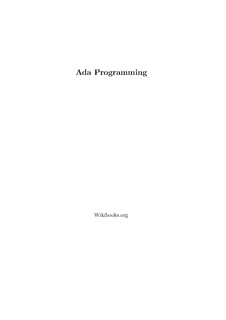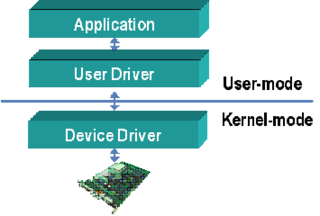In computing, a compiler is a computer program that translates computer code written in one programming language into another language. The name "compiler" is primarily used for programs that translate source code from a high-level programming language to a lower level language to create an executable program.

An integrated development environment (IDE) is a software application that provides comprehensive facilities to computer programmers for software development. An IDE normally consists of at least a source code editor, build automation tools and a debugger. Some IDEs, such as NetBeans and Eclipse, contain the necessary compiler, interpreter, or both; others, such as SharpDevelop and Lazarus, do not.
Static program analysis is the analysis of computer software that is performed without actually executing programs, in contrast with dynamic analysis, which is analysis performed on programs while they are executing. In most cases the analysis is performed on some version of the source code, and in the other cases, some form of the object code.
Software architecture refers to the fundamental structures of a software system and the discipline of creating such structures and systems. Each structure comprises software elements, relations among them, and properties of both elements and relations. The architecture of a software system is a metaphor, analogous to the architecture of a building. It functions as a blueprint for the system and the developing project, laying out the tasks necessary to be executed by the design teams.

A debugger or debugging tool is a computer program used to test and debug other programs. The main use of a debugger is to run the target program under controlled conditions that permit the programmer to track its operations in progress and monitor changes in computer resources that may indicate malfunctioning code. Typical debugging facilities include the ability to run or halt the target program at specific points, display the contents of memory, CPU registers or storage devices, and modify memory or register contents in order to enter selected test data that might be a cause of faulty program execution.

Eclipse is an integrated development environment (IDE) used in computer programming. It contains a base workspace and an extensible plug-in system for customizing the environment. Eclipse is written mostly in Java and its primary use is for developing Java applications, but it may also be used to develop applications in other programming languages via plug-ins, including Ada, ABAP, C, C++, C#, Clojure, COBOL, D, Erlang, Fortran, Groovy, Haskell, JavaScript, Julia, Lasso, Lua, NATURAL, Perl, PHP, Prolog, Python, R, Ruby, Rust, Scala, and Scheme. It can also be used to develop documents with LaTeX and packages for the software Mathematica. Development environments include the Eclipse Java development tools (JDT) for Java and Scala, Eclipse CDT for C/C++, and Eclipse PDT for PHP, among others.
The worst-case execution time (WCET) of a computational task is the maximum length of time the task could take to execute on a specific hardware platform.

The Ada Semantic Interface Specification (ASIS) is a layered, open architecture providing vendor-independent access to the Ada Library Environment. It allows for the static analysis of Ada programs and libraries. It is an open, published interface library that consists of the Ada environment and their tools and applications.
Software visualization or software visualisation refers to the visualization of information of and related to software systems—either the architecture of its source code or metrics of their runtime behavior—and their development process by means of static, interactive or animated 2-D or 3-D visual representations of their structure, execution, behavior, and evolution.
Automated code review software checks source code for compliance with a predefined set of rules or best practices. The use of analytical methods to inspect and review source code to detect bugs or security issues has been a standard development practice in both Open Source and commercial software domains. This process can be accomplished both manually and in an automated fashion. With automation, software tools provide assistance with the code review and inspection process. The review program or tool typically displays a list of warnings. A review program can also provide an automated or a programmer-assisted way to correct the issues found. This is a component for mastering easily software. This is contributing to the Software Intelligence practice. This process is usually called "linting" since one of the first tools for static code analysis was called Lint.
MISRA C is a set of software development guidelines for the C programming language developed by MISRA. Its aims are to facilitate code safety, security, portability and reliability in the context of embedded systems, specifically those systems programmed in ISO C / C90 / C99.
The Bauhaus project is a software research project collaboration among the University of Stuttgart, the University of Bremen, and a commercial spin-off company Axivion formerly called Bauhaus Software Technologies. The Bauhaus project serves the fields of software maintenance and software reengineering.
Semmle Inc is a code analysis platform provider, with offices in San Francisco, Seattle, New York, Oxford, Valencia and Copenhagen. Built on research in compilers and data analysis, developed by a team from the University of Oxford, its patented technology creates a knowledge base using all available data about the software development process, and allows its users to accurately and efficiently query that knowledge base. Results are presented in user interfaces designed for the different needs of developers, managers, and executives. The insights Semmle delivers help teams staff projects more intelligently, retain and develop talent better, control software costs, and deliver new functionality sooner.
Domain-driven design (DDD) is the concept that the structure and language of software code should match the business domain. For example, if a software processes loan applications, it might have classes such as LoanApplication and Customer, and methods such as AcceptOffer and Withdraw.
Cppcheck is a static code analysis tool for the C and C++ programming languages. It is a versatile tool that can check non-standard code. The creator and lead developer is Daniel Marjamäki.

Device drivers are programs which allow software or higher-level computer programs to interact with a hardware device. These software components act as a link between the devices and the operating systems, communicating with each of these systems and executing commands. They provide an abstraction layer for the software above and also mediate the communication between the operating system kernel and the devices below.




